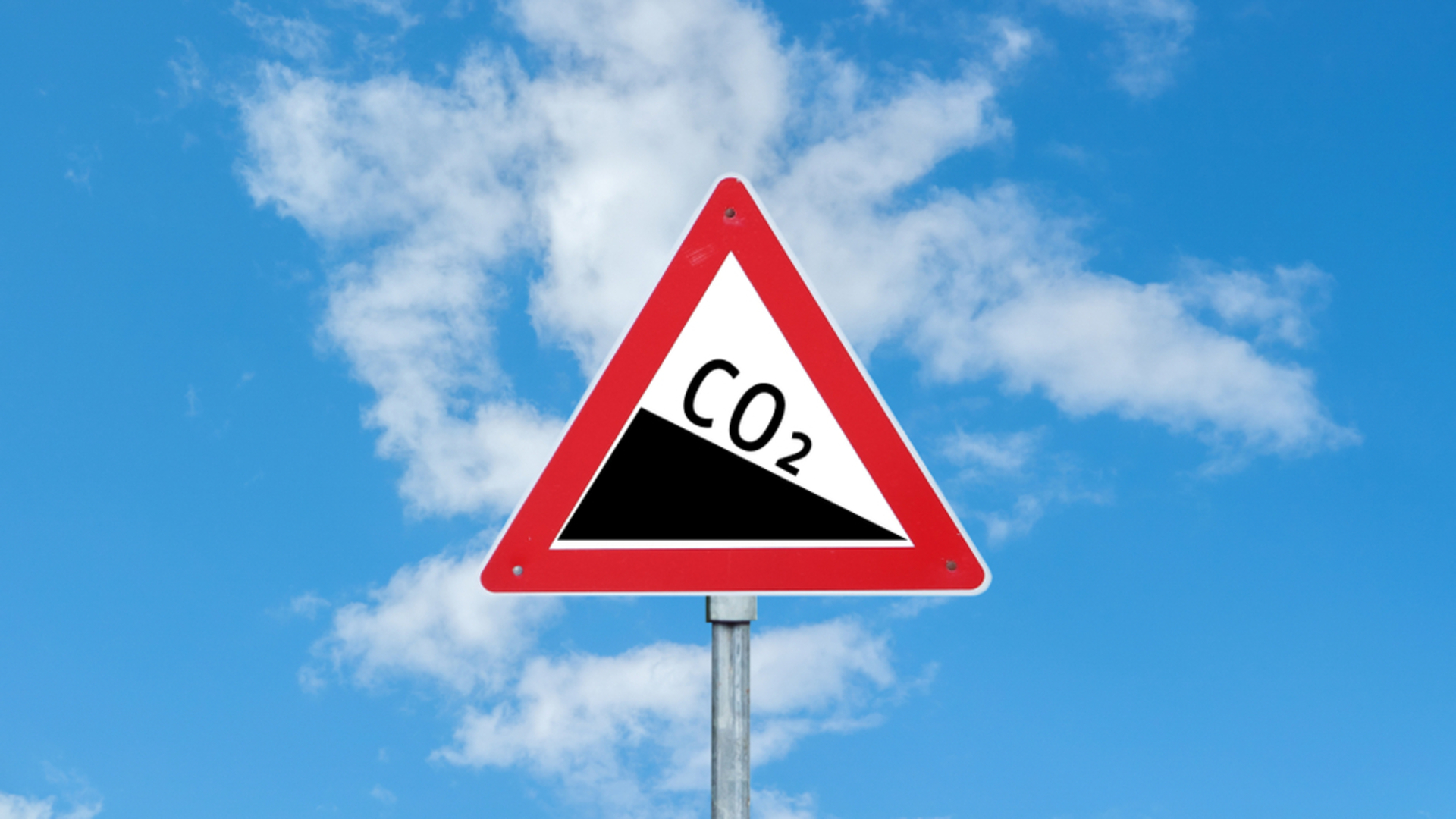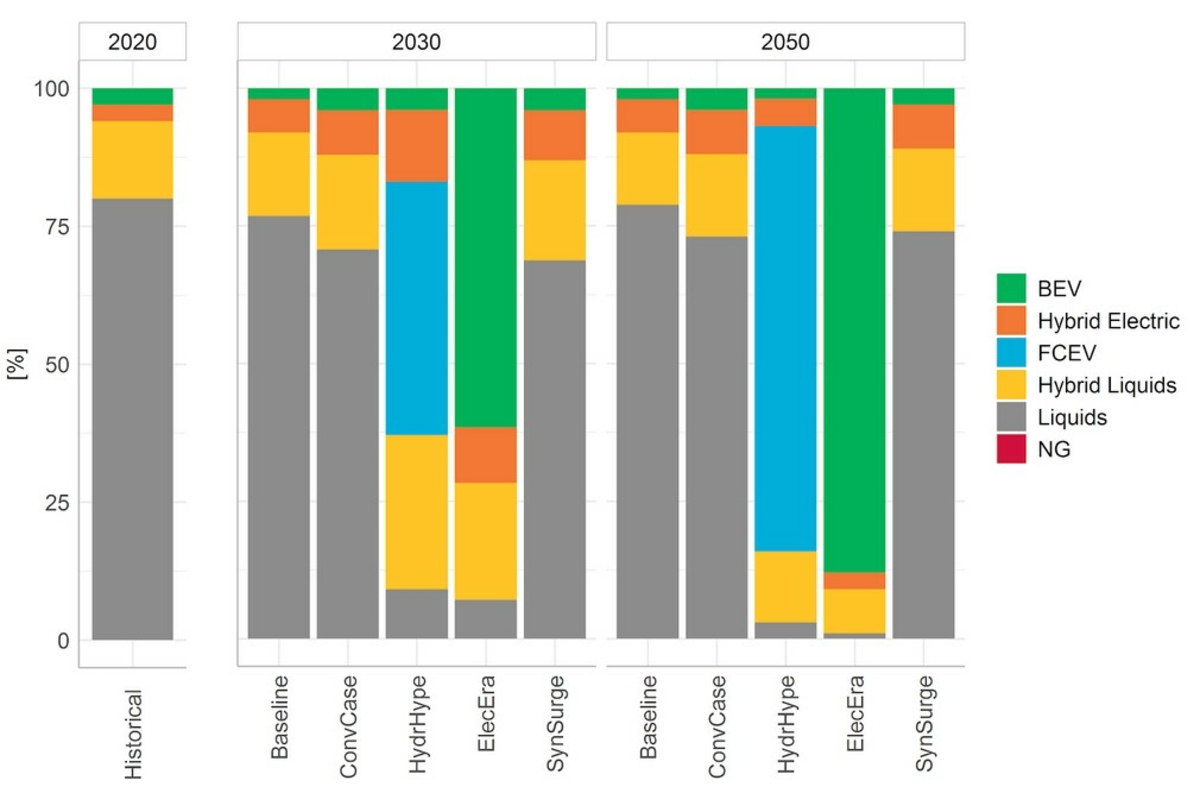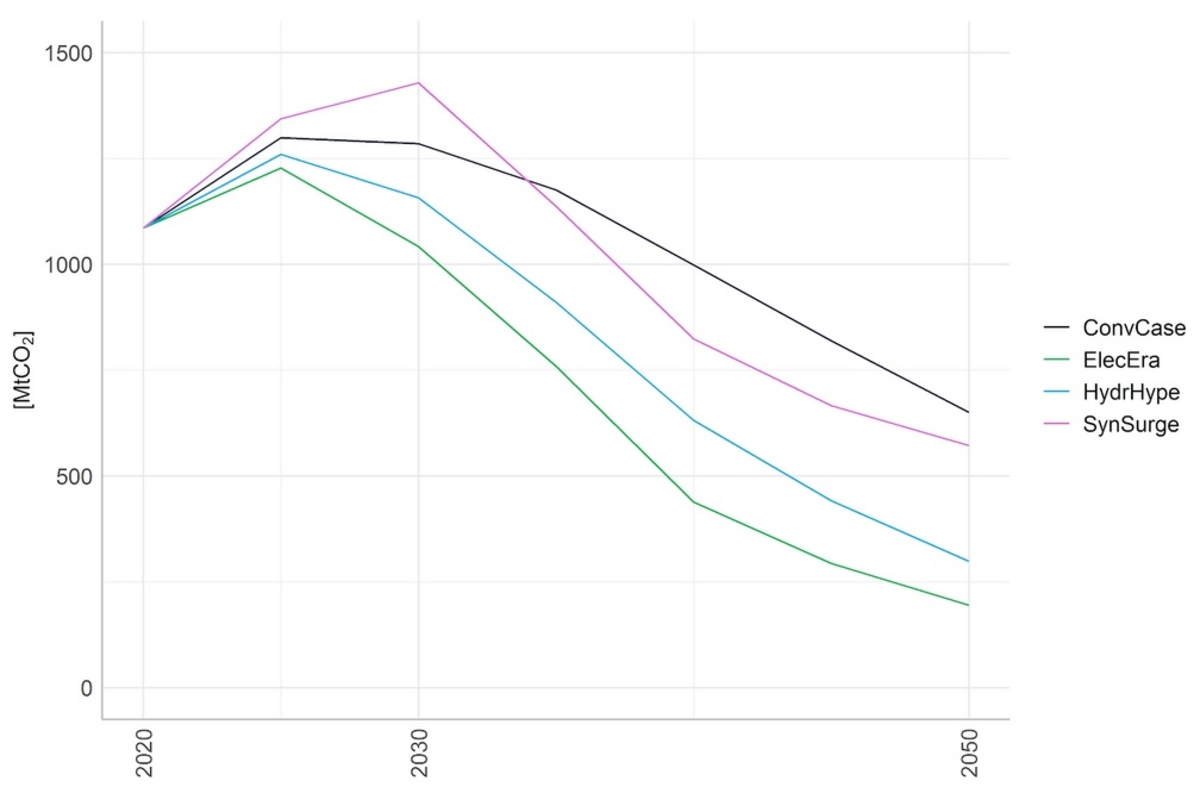
Mobility transition scenarios for passenger transportation
The goal of climate neutrality of the European and German economy can only be achieved with a deep decarbonization of the mobility sector. Various strategies and technologies for achieving such decarbonization are under consideration in the public debate.
Scenarios of the transformation of the mobility sector towards a climate friendly future based on detailed model simulations are of substantial value for informing this debate. Integrated energy-economy-climate models can be used to explore alternative mobility transformations in the systems context, and to analyse their implications. PIK augmented its REMIND energy-economy-climate model by coupling it to the detailed transport sector model EDGE-T, to assess four distinctly different technology and policy strategies for transforming the light duty vehicle (LDV) sector in the context of the energy transition:
- In the Conventional Case scenario, there are no market introduction programs for new vehicle concepts, resulting in a continued dominance of conventional internal-combustion engine cars along with full and mild hybrid vehicles. Climate policies focus on economy-wide carbon pricing in line with the 2°C-limit.
- The Synfuels Surge scenario is a variant of the conventional case, with a blending mandate of 10% synthetic electricity-based fuels (“synfuels”) by 2035 in addition to economy wide carbon pricing in line with the 2°C-limit.
- The Hydrogen Hype scenario explores the consequences of strong policy support and a shift of consumer preferences towards fuel cell electric vehicles (FCEVs), via a rapid build-up of hydrogen refueling infrastructure, rebates for FCEVs, and an increasing stringent regulation of conventional vehicles. These support policies also lead to an increasing consumer acceptance of FCEVs. By contrast, pessimistic assumptions on the technology evolution and consumer acceptance of battery electric vehicles (BEVs) are chosen. In addition to the FCEV-focused technology policies, an economy-wide carbon pricing in line with the 2°C-limit is in place.
- The Electric Era scenario explores an accelerated transition toward battery-electric vehicles (BEVs), achieved via infrastructure policies (build-up of charging stations), market introduction policies (a rebate system of subsidies for BEVs) and increasingly stringent regulation of conventional vehicles. The support policies also lead to increasing consumer acceptance of BEVs. In addition to the technology policies, an economy-wide carbon pricing in line with the 2°C-limit is in place.
The four climate policy scenarios are contrasted with a Baseline scenario that assumes no further policy interventions.


The scenario results are visualized in a scenario explorer. They show substantial differences in the rate and depth of the transformation across the different scenarios.
Key findings and policy implications
- Carbon pricing alone is insufficient to induce a transformation of mobility. Due to the importance of consumer preferences, infrastructure and technological change, additional policies fostering infrastructure and market introduction are of key importance. This becomes evident from the comparatively small difference between the Conventional Case and Baseline scenarios as shown in Fig. 1
- Given fast technology developments, especially regarding battery costs, and the comparatively lower infrastructure complexity, a quick ramp-up of BEVs can be achieved with lower policy effort than a ramp-up of hydrogen-based FCEVs. Electric Era, the BEV-focused strategy, also achieves deeper emission reductions than all other scenarios.
- CO2 emissions from passenger transportation will remain substantial during the 2020s and 2030s according to all scenarios. This is due to further increases in mobility demands and inertia in the turnover of the vehicle stock.
- Achieving a high share of electricity-based synthetic fuels (“synfuels”) in the gasoline mix is complicated by the substantial electricity and CO2 input requirements, as well as high costs. Combined total tailpipe and energy supply CO2-emissions attributed to passenger mobility are higher in the Synfuel Surge scenario than in the Electric Era and Hydrogen Hype scenarios (Fig. 2). Emissions for synfuel production are particularly high around 2030, when already large amounts of electricity are required for synfuel production, while the power sector is not yet fully decarbonized.